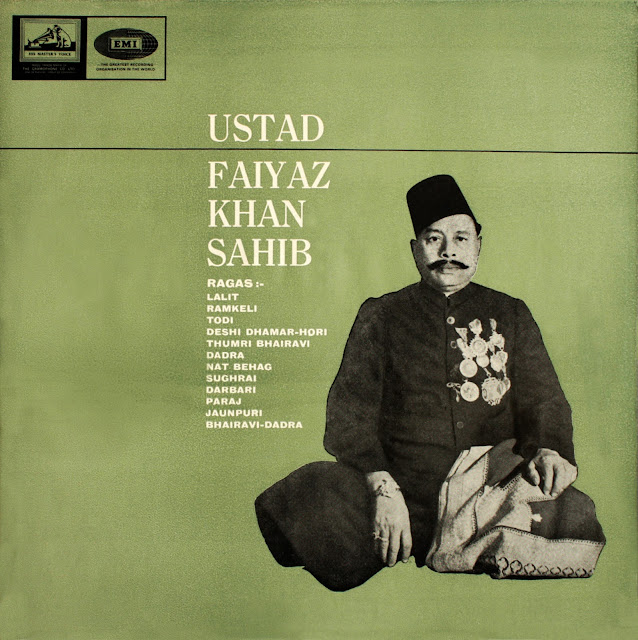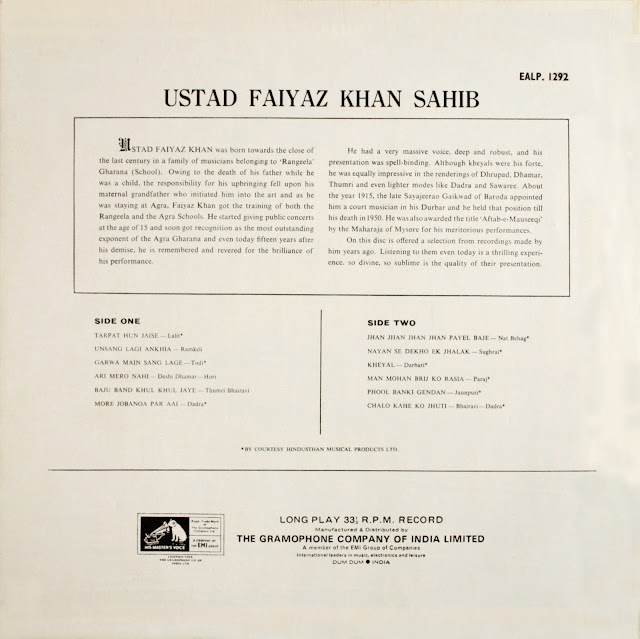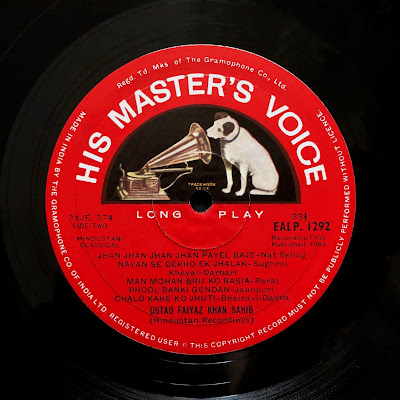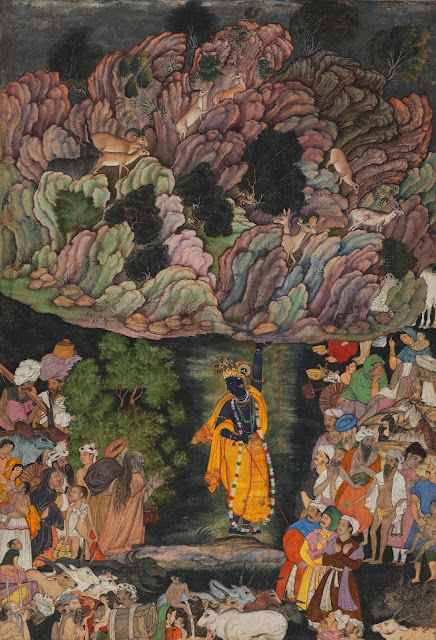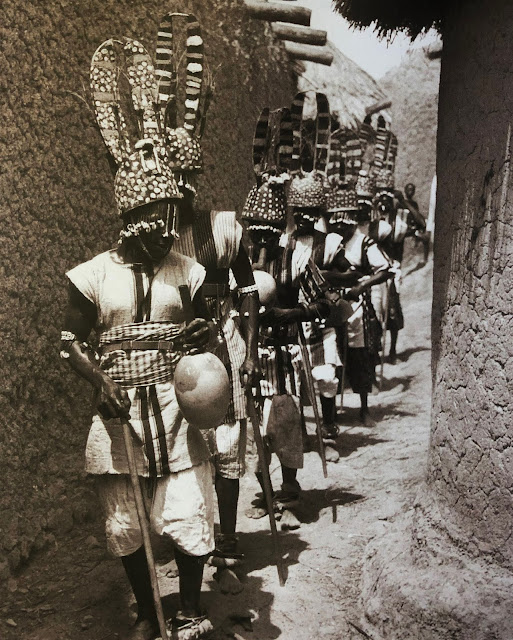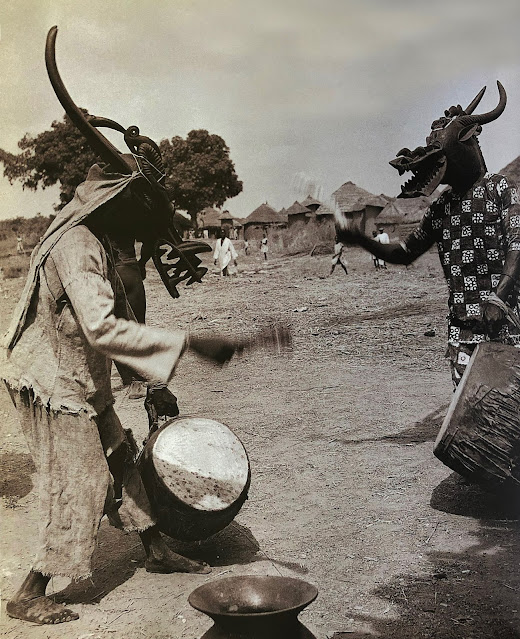IVORY COAST – CÔTE D'IVOIRE
The Music of the Senufo – An Anthology of African Music – BM 30 L 2308 – recorded by Hugo Zemp, 1962 and 1965 (LP)






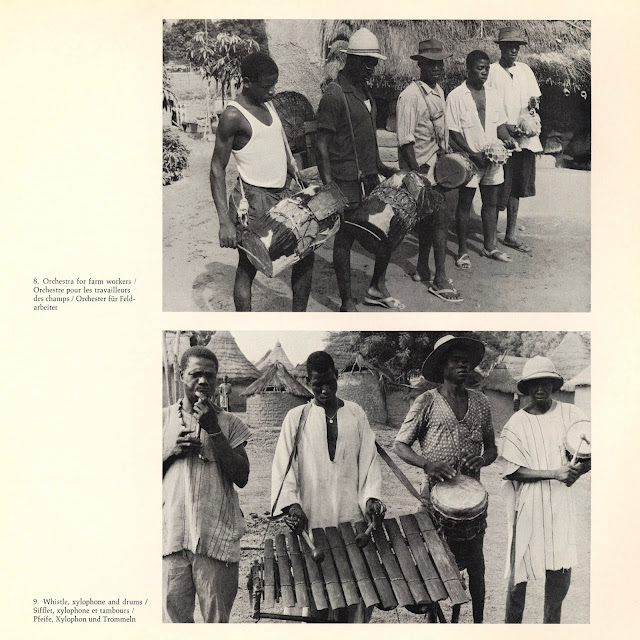



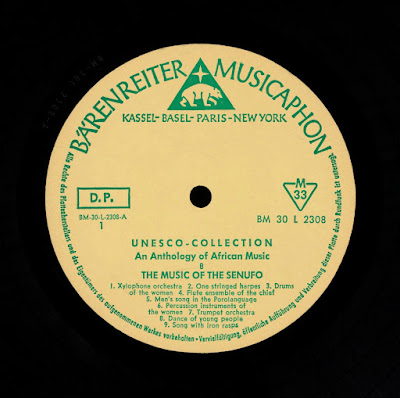

These seminal recordings of seven Senufo sub-groups in northern Ivory Coast – the Kiembara, Fodonon, Nafara, Teneoure, Kofolo, Niarofolo, and Kessembele – made in 12 different locations in 1962 and 1965, present the traditional music of the Senufo people who also inhabit southeastern Mali and southwestern Burkina-Faso.
The music connected to Poro – a central Senufo social and religious tradition closely connected to the invisible world – is featured prominently here (tracks A2, A3, A5, A6, B4, B5 and B6). From the age of seven, every Senufo male must follow a 21-year esoteric Poro initiation, divided into three seven-year phases. Only at the end of this cycle are the initiates accepted as full members of the community. There are also recordings of a women’s Poro (A3, A6) and excerpts of a funeral rite for a deceased member of the Poro secret society (B6).
This musical panorama on the essential Bärenreiter Musicaphon label also includes a terrific trumpet orchestra with drummers (A7), ensembles with xylophones (A1, A8, B4), flutes and whistles (A4, B4), a work song (B2), and more.*
Ces enregistrements essentiels de sept sous-groupes Sénoufo du nord de la Côte d'Ivoire – les Kiembara, Fodonon, Nafara, Teneoure, Kofolo, Niarofolo et Kessembele – réalisés dans 12 localités différentes en 1962 et 1965 présente la musique traditionnalle des Sénoufo qui vivent également dans le sud-est du Mali et le sud-ouest du Burkina-Faso.
La musique liée au Poro – une tradition sociale et religieuse centrale à la culture et la spiritualité sénoufo et étroitement liée au monde invisible – est mise en avant ici (pistes A2, A3, A5, A6, B4, B5 et B6). À partir de l’âge de sept ans, chaque garçon Sénoufo doit suivre une initiation ésotérique Poro de 21 ans, divisée en trois phases de sept ans. C'est seulement à la fin de ce cycle que les initiés sont acceptés comme membres à part entière de la communauté. Il existe également un Poro pour les femmes avec ses propres rites et musiques (A3, A6) et l’album se termine par des extraits d'un rite funéraire pour un membre décédé de la société secrète Poro (B6).
Ce panorama musical sur l'incontournable label Bärenreiter Musicaphon comprend également un formidable orchestre de trompes avec des percussions (A7), des ensembles avec xylophones (A1, A8, B4), flûtes et sifflets (A4, B4), un chant de travail pour les agriculteurs (B2), etc.*
*Condensed and paraphrased from the liner notes of Hugo Zemp
KIEMBARA
A1 – Orchestra with four xylophones and three kettledrums, Famankaha (1965)
FODONON
A2 – Singers, nine one-stringed harps and three calabash rattles, Lataha (1962)
A3 – Women’s Poro ensemble with lead singers, a choir, two drums and three calabash rattles, Lataha (1965)
NAFARA
A4 – A chief’s ensemble with two three-hole transverse flutes and two tama hour-glass drums, Napieoledougou (1965)
A5 – Psalmodic chant in the secret Poro language, Nambodielekaha (1965)
A6 – Women’s Poro ensemble with singers, water drums and calabash rattle, Sityenyerikaha (1965)
A7 – Orchestra with seven wooden cross-blown trumpets and two drummers, Navonongohaka (1965)
TENEOURE
A8 – Dance of young people with singers, two xylophones, two kettle-drums, Boundiali (1965)
KOFOLO
A9 – A singer, chorus, a six-stringed kori harp-lute and iron rasps, Diegon (1965)
NIAROFOLO
B1 – Song by three young women, Ferkessedougou (1965)
B2 – Farming work song with a solo singer, chorus, three barrel-shaped drums, two calabash rattles, Momirasso (1965)
B3 – Woman singing while grinding millet, Ferkessedougou (1965)
TENEOURE
B4 – Dance of the Poro initiates with four wooden whistles, a xylophone and two drums, Boundiali (1965)
KASSEMBELE
B5 – Two Poro masks beat barrel-shaped drums at the edge of the sacred forest (see the LP’s front cover’s), Fonondara (1965)
KIEMBARA & FODONON
B6 – Excerpts of day-long funeral rites for a deceased member of the Poro secret society, Fodonnitionkaha (1965)
Download:
Hugo Zemp (b. 1937) is a major ethnomusicologist from Switzerland who made field recordings and films in many countries, including Ivory Coast, the Solomon Islands and Switzerland.
More info on Zemp here
Our other Ivorian music posts:
Senufo – Fodonon Funeral Music – Le Chant du Monde – LDX 74 838 here
Chants et Rythmes en Pays Yacouba – Editions Trindia – Production Oulaï T. Francis LP002 here
Musique d’Afrique Occidentale – Collection Musée de l'Homme – LDM 30116 here
Our other Hugo Zemp recordings:
Solomon Islands – 'Are 'Are – Flutes de Pan Mélanésienne Vol. 1 – Vogue LDM 30 104 here
***
Senufo proverbs / Proverbes Sénoufo
“Strong leaders speak the language of forgiveness, tolerance and wisdom.”
« Le pardon, la tolérance et la sagesse sont le langage des hommes forts. »
“One can hear a tree fall, but a forest grows without making a sound.”
« Quand un arbre tombe, on l'entend ; quand la forêt pousse, pas un bruit. »
Photographs below are from The Dances of Africa by Michel Huet, Harry N. Abrams, 1996:
Senufo Poro initiation ritual when the candidates parade and dance in the village prior to entering the sacred forest for a one-month retreat (Sinématyali, Ivory Coast). The Poro initiation – divided into three seven-year initiation cycles – starts at age seven until the age of 28:
Two Ponyugo helmet-masks – a hyena's head with antelope horns, warthog tusks, and two Senufo ancestral spirit animals, the hornbill and the chameleon – during the funeral of an initiate. Here they beat fast tempoed drums to guide the soul of the deceased (which continues to roam the village) to the land of the ancestors:
Three senior Poro members ritually greet the Nasolo mask in the sacred forest
during a Senufo funeral:
Please help me purchase
important traditional records to pursue my global
curation project and share the best finds with you on this blog:
